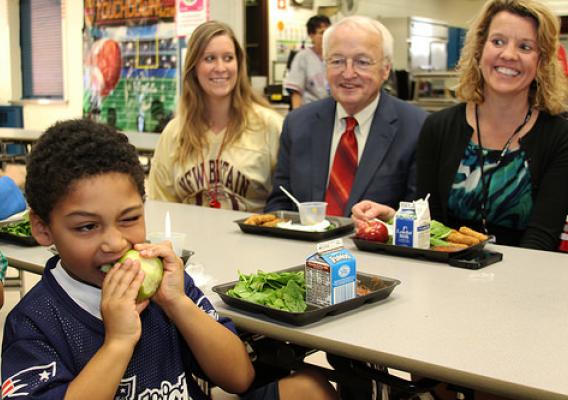The following guest blog is part of our Cafeteria Stories series, highlighting the efforts of hard working school nutrition professionals who are dedicated to making the healthy choice the easy choice at schools across the country. We thank them for sharing their stories!
“My carrot is burnt!” exclaimed a Willow Cove Elementary student in February, when they harvested carrots from the school garden for the first time. The student had never seen a purple carrot before and that day, the whole class enjoyed sample tastes of orange, white, and purple carrots. Carrots are just one of the many crops students have harvested from the Willow Cove garden, and they have a motivated teacher and their Nutrition Services department to thank for the experience.
At the start of last school year, Willow Cove Elementary School’s kindergarten teacher called the District’s Director of Nutrition Services, Matthew Belasco, to ask for a few milk crates to start a small window garden. Matthew, eager to get a school garden up and running, took this spark of interest and ran with it. Within a few hours, he arrived at Willow Cove with a wheel barrow, soil, shovels, and seeds, convinced the teacher that raised beds were preferable, and got to work planting the first school garden within Pittsburg Unified School District (PUSD), just outside Willow Cove’s kindergarten classroom. Willow Cove’s success with maintaining the garden and engaging students with outdoor lessons created the momentum and excitement needed to begin expanding Pittsburg’s farm to school program.









